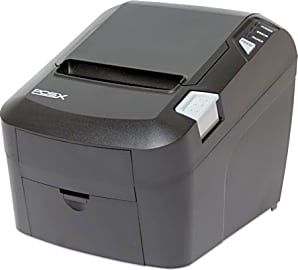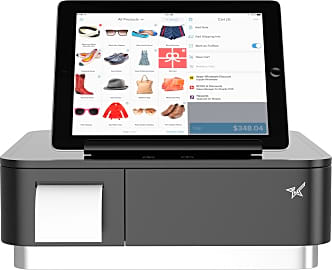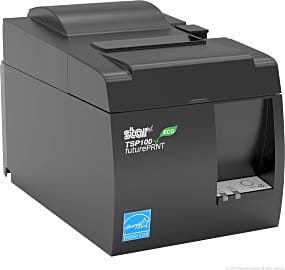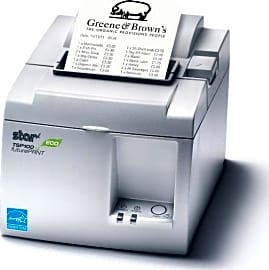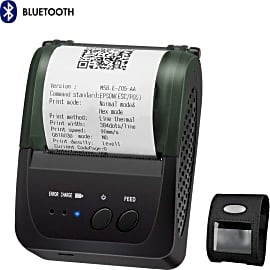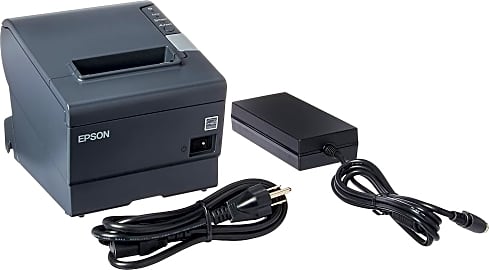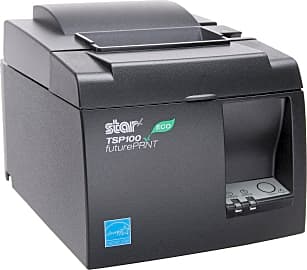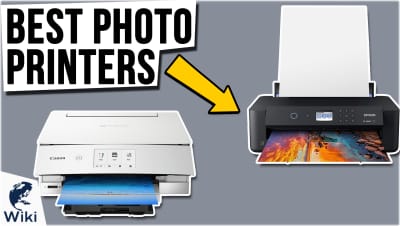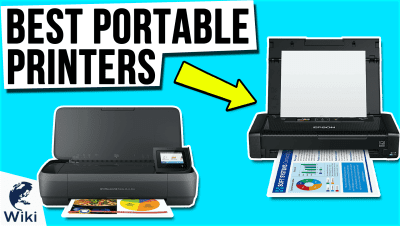The 10 Best Receipt Printers

This wiki has been updated 44 times since it was first published in March of 2015. Running a business poses enough challenges without having to worry about the reliability of your equipment. If your store, restaurant or small company needs to provide customers with a paper copy of their transaction, one of these receipt printers will generate it quickly, so you can keep the line moving and the cash rolling in. Our collection offers a range of prices and capabilities. When users buy our independently chosen editorial picks, we may earn commissions to help fund the Wiki.
Editor's Notes
April 28, 2020:
For this update, we replaced the SNBC Serial with the Epson TM-T88V, a thermal printer that is over a pound lighter, and operates quickly and quietly.
To include an option for users who need to print while away from their desk or office, we also added the portable Losrecal Personal. This model is priced much lower than the competition, and its battery can last for up to 4 hours of continuous printing. Its compact size does limit it to the thinner, 58mm x 30mm rolls though, so if you prefer larger sized paper, this might not be the best for you.
All of these options have specific compatibility requirements and limitations, so make sure to carefully examine the product details before purchasing.
If you’re in the process of starting a business, and not sure if these printers are what you're looking for, review these all-in-one cash register as well.
The Three Categories Of Receipt Printers
Many people prefer them since they don't require ink or toner, which can be quite costly to replace after years of doing business.
Receipt printers are designed to hold small paper roles, instead of vertically placed stacks of paper like one finds in standard 8.5" by 11" printers. Instead of connecting to a traditional keyboard, they usually hook up to a cash register or whatever device holds the business' point of sale system. They're usually quite compact since they sit on cluttered surfaces like the check-out area of a grocery store or the desk of a working professional.
There are three main types of receipt printers: Inkjet, Dot-matrix, and Thermal. Dot-matrix printers have a small printing head that moves either in an up and down or side to side motion. Like a typewriter, this printer depends on the impact of the head against the paper to produce characters. The head hits a cloth ribbon that is covered in ink, and then impresses a character onto the paper. It creates characters through a series of thousands of tiny dots, which is how it gets its name. One concern with Dot-matrix printers is that the ribbon must frequently be replaced. Inkjet printers use tiny ink guns to create their characters, instead of impact. The guns shoot little dots of ink at the paper, but the dots are so minuscule that people cannot detect them inside of the characters.
Thermal printers use heat to create characters. Many people prefer them since they don't require ink or toner, which can be quite costly to replace after years of doing business. In fact, thermal printers are one of the top money-saving tools used by companies who do a lot of shipping labels. Thermal printers use coated thermochromic paper, and the thermal head heats up the areas where it needs to create characters. The heat causes the coating on the paper to turn black, resulting in the desired content. Thermal printers are usually faster than Dot-matrix or Inkjet models since the characters are created in one movement.
Special Features That Will Boost Business
Many businesses understand the importance of offering promotions and discounts, so a receipt printer capable of printing coupons, too, is incredibly useful. Businesses that service a high volume of customers every day, and especially those that create long, itemized receipts should consider a model with a high paper-per-minute production rate. If the receipt printer is for a home office, where the user doesn't want to disturb others, a person should look for a thermal printer; these are the quietest variety since they do not use any impact to create the font.
Some models will alert the user if there has been a loss of Internet in the middle of a printing job, and others buzz to notify the user that the printing job is done.
Restaurant owners need receipt printers that are heat and humidity resistant as they will likely place them in the kitchen where their staff can quickly receive new orders. Busy businesses that have a lot of staff moving around should look for a receipt printer in a sturdy clamshell housing that can survive being knocked over. If someone needs their receipt printer to communicate with several computers, they should get one with Ethernet and local area network connectivity.
Receipt printers can have several notification features that can be incredibly useful. Some models will alert the user if there has been a loss of Internet in the middle of a printing job, and others buzz to notify the user that the printing job is done. The latter feature helps keep the user from ripping out the receipt before it's complete, and having to start all over again. There are also models with LED status lights that tell the user important information like when the ink cartridge is low.
A Brief History Of Receipts
Receipts have been an important part of society since nearly the beginning of civilization. In 3200 BCE Samaria, Israel, temple offerings were an important part of the taxation system. People would write down symbols to represent the offerings they had made to their temples, and these acted as a form of receipt. Papyrus receipts from Egypt have been found that date back to the mid-1200s, recording purchases like cattle and grain. Some receipts at the time were chiseled onto stone, but these were inconvenient to carry around and cumbersome at best.
Banks at the time would collect money from a customer, and give them a receipt for the amount.
Italy played a major role in the creation of the first modern, public banks. These banks made receipts that allowed people to travel without carrying large amounts of money. At the time, most money was still in coin form and far too heavy to keep in large quantities in a suitcase. Banks at the time would collect money from a customer, and give them a receipt for the amount. At that bank's sister branch in another city, the customer could hand in their receipt, and receive physical money.
In the 1400s, the German blacksmith Johannes Gutenberg created mechanical movable type printing, which many say inspired the Printing Revolution and, as a result, the Age of Enlightenment since information could finally be spread far and wide on paper. One of the most famous products to come of Gutenberg's printing press was a version of the bible. After that, Gutenberg began printing receipt books that businesses could purchase and use to keep track of exchanges with their customers.



